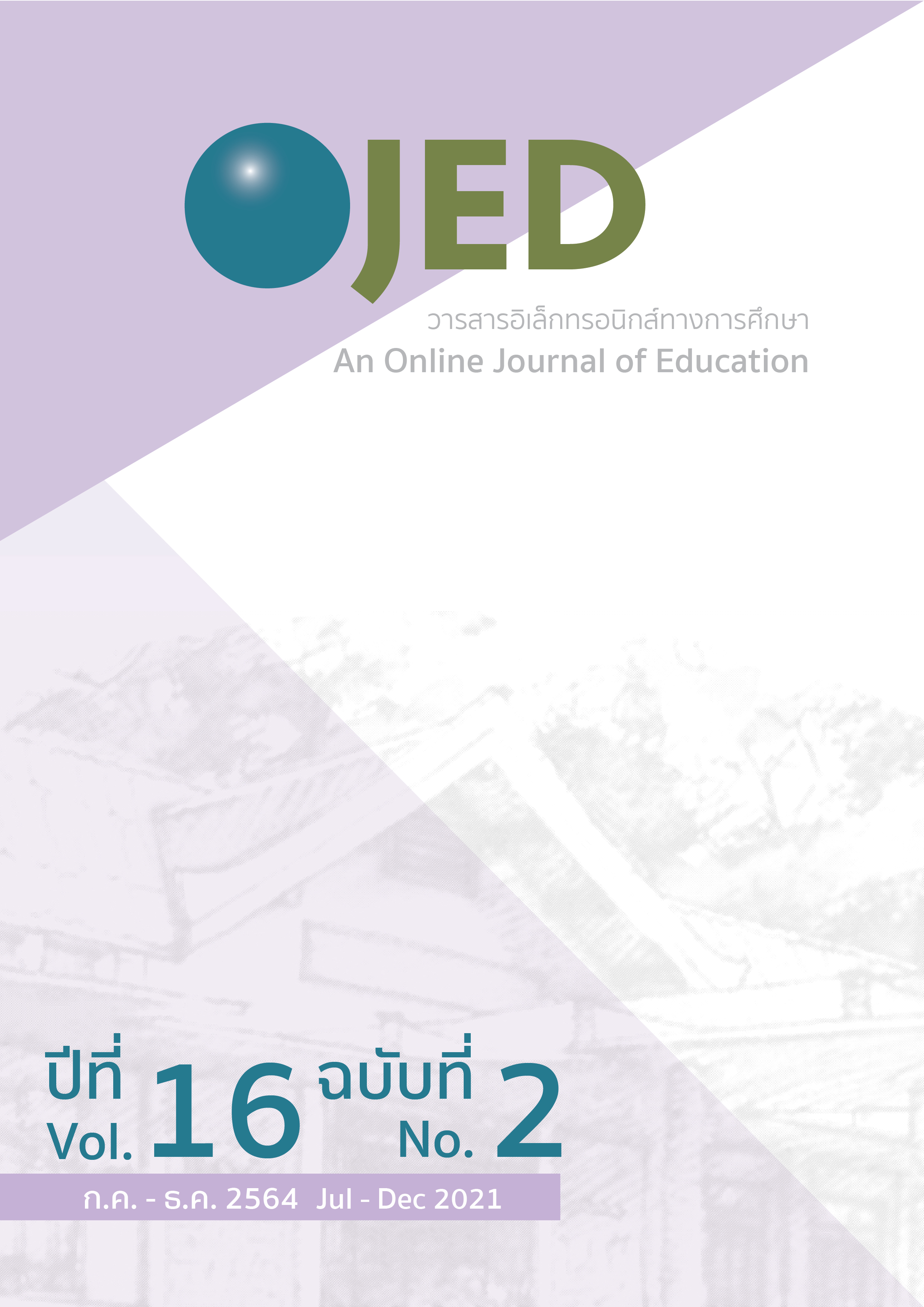Effects of Organizing Activities by Using the Engineering Design Process on Creativities of Kindergarteners
DOI:
https://doi.org/10.14456/ojed.2021.67Keywords:
engineering design process, creativities, kindergartenersAbstract
The purpose of this action research was to study the effects of organizing activities by using Engineering design process on creativity of kindergarteners. The target groups were 8 second-level kindergarteners from Chulalongkorn University Demonstration Elementary School studying in the first semester of academic year 2015. The research instrument was the creativity of kindergarteners by Torrance Test of Creatively Thinking Figural form A. The duration of the study was 6 weeks. The research design was one group pretest-posttest designs. The data were statistically analyzed by using arithmetic mean, and standard deviation The research results found that after the experiment, the mean scores of creativity was higher than those of before the experiment. According to each aspect of creativity, the result showed that before the experiment was fluency (M = 9.88), originality (M = 9.60), and elaboration (M = 4.56). The result showed that after, the aspect which had the highest mean scores was fluency (M = 13.98), originality (M = 13.46), and elaboration (M = 5.15) respectively.
References
แคทลียา โคตะนนท์. (2549). การพัฒนาความคิดสร้างสรรค์. วารสารการวัดผลการศึกษา, 28(82), 27-47.
จุฑาทิป วัชรานนท์. (2533). ผลการจัดกิจกรรมพัฒนาความคิดสร้างสรรค์เด็กวัยชน 3-5 ปี. กรมสุขภาพจิต กระทรวงสาธารณสุข.
ประพันธ์ศิริ สุเสารัจ. (2551). การพัฒนาการคิด. พิมพ์เทคนิคพริ้นติ้ง.
ประไพ ประดิษฐ์สุขถาวร. (2557). การพัฒนาด้านสติปัญญาของเด็กอนุบาล. http://taamkru.com/
สมศักดิ์ สินธุระเวชญ์. (2535). ความคิดสร้างสรรค์: หลักการ ทฤษฎี การเรียนการสอน การวัดผลประเมินผล. กรมวิชาการ กระทรวงศึกษาธิการ.
สุทธิพงษ์ พงษ์วร. (2555). ความคิดสร้างสรรค์ทักษะการแก้ปัญหาและกิจกรรมการออกแบบ. นิตยสารสถาบันส่งเสริมวิทยาศาสตร์และเทคโนโลยี, 40(175), 28-31.
วีณา ประชากูล. (2549). การเสริมสร้างความคิดสร้างสรรค์ของเด็กปฐมวัย. http://www.myfirstbrain.com/teacher_view.aspx?ID=56106
วีระ สุดสังข์. (2550). การคิดวิเคราะห์ คิดอย่างมีวิจารณญาณและคิดสร้างสรรค์. ชมรมเด็ก.
โทนี บูซาน. (2547). พลังความฉลาดเชิงสร้างสรรค์. สำนักพิมพ์ขวัญข้าว.
อารี รังสินันท์. (2532). ความคิดสร้างสรรค์. สำนักพิมพ์ข้าวฟ่าง.
Anderson. (1957). An American view of Japanese education. Creativity Research Journal, 17(4), 337-347.
Bernadette Duffy. (1998). Supporting Creativity and Imagination in the Early Years. Open University Press.
Christine. (2009). General Creativity and Creative Engineering Design in First Year Engineering Students. Journal of Engineering Education, 98(2), 145-156.
Christine M. Cunningham. 2004. The Engineering Design Process. http://www.eie.org/overview/engineering-design-process
David W.Johnson & Roger T.Johnson. (1979). Conflict in the Classroom: Controversy and Learning. http:// journal.sagepub.com
Davis, G.A. (1973). Psychology of problem solving. Basic Books.
Herbert Birkhofer. (2011). The future of design methodology. Springer.
Osborn. A.F. (1963). Applied imagination: Principles and procedures of creative (2nd ed.). Charles Scribner’s Sons.
Strom, R., & Strom, P. (2002). Changing the rules: Education for creative thinking. http://dx.doi.org/10.3102/0013189X033002012
Torrance E.P., & Myers, R.E. (1972). Creative Learning and Teaching. Dood, Mead and Company.
Urban, K. K. (1991). On the development of creativity in children. Creativity research Journal, 4(2), 177-191.
Downloads
Published
How to Cite
Issue
Section
License

This work is licensed under a Creative Commons Attribution-NonCommercial-NoDerivatives 4.0 International License.




